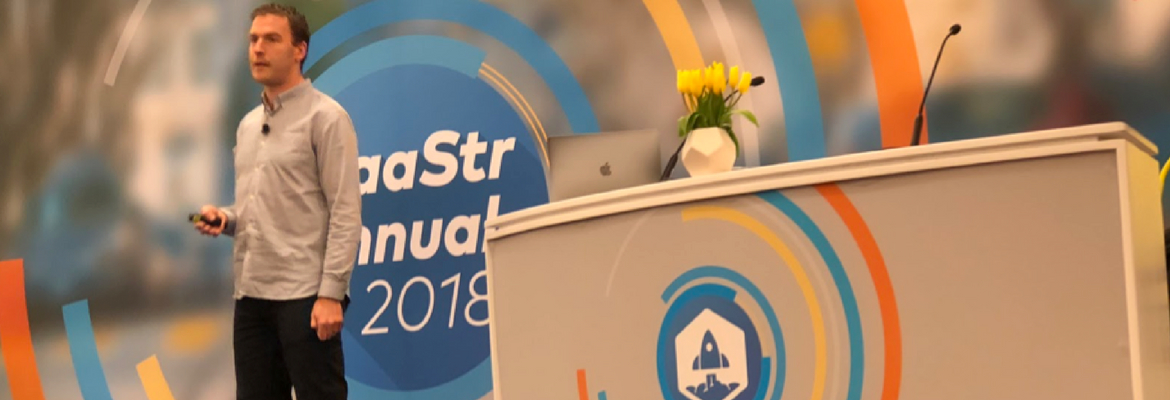
As the ramp up for June’s SaaStr Europa begins, we’re thinking about some of the best sessions we saw at SaaStr Annual in February.
“Product Strategy at Scale” was a standout session presented by Intercom Chief Strategy Officer and Co-Founder Des Traynor, cutting product insights down to size and helping you build upon that framework alongside business growth. We briefly touched on it in our 6 Key Takeaways from SaaStr Annual blog following the conference, but wanted to share a more focused deep dive on those insights.
We took several (amateur) pictures of slides, included below, and also found this fantastic graphic created for SaaStr annual by Alli McKee of Stick that shows the ideal flow for considering and building your product offerings.
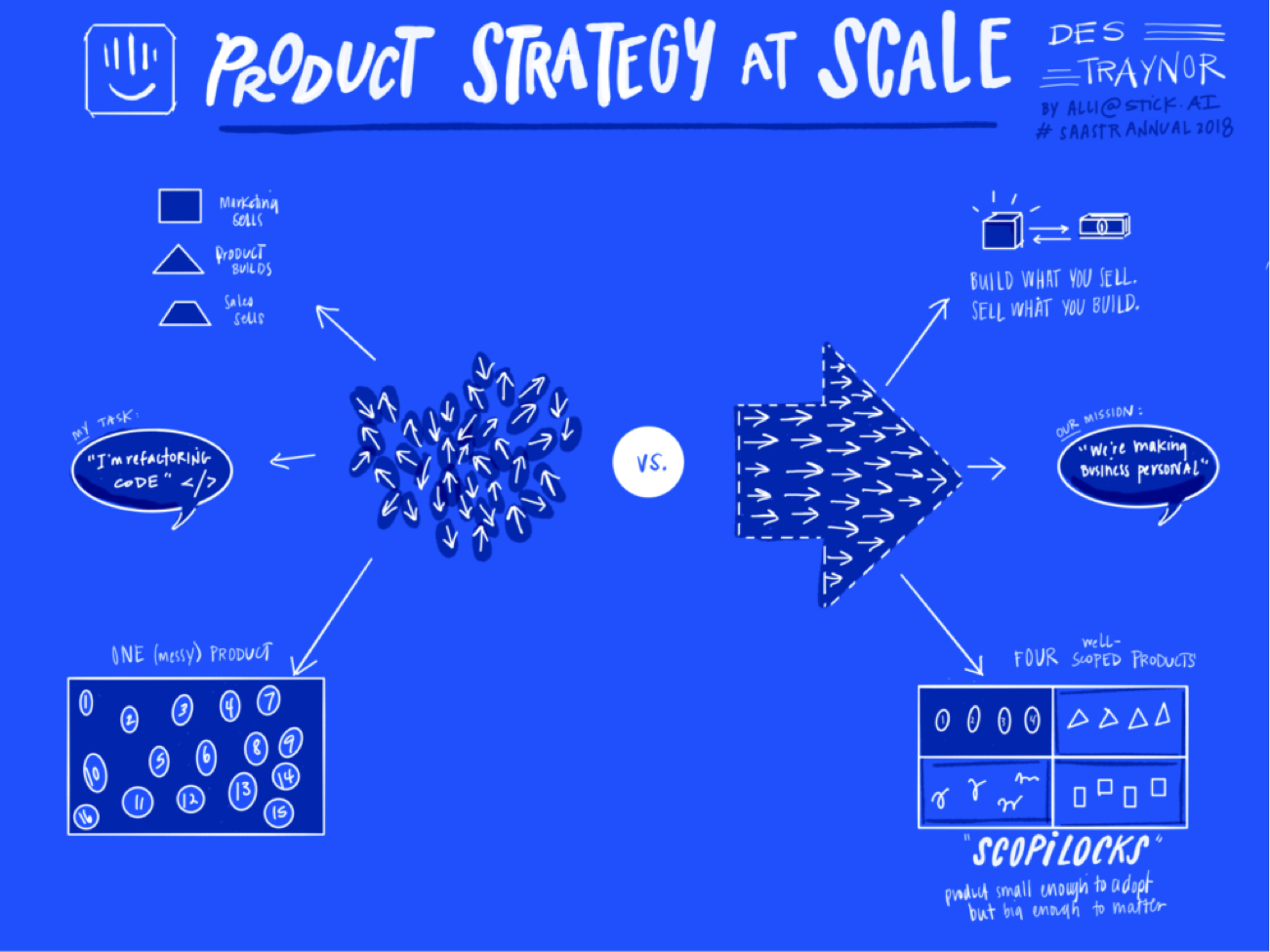
Traynor’s presentation focused on three main topics: what product you should build, how to align your departments to have consistent messaging, and strategies for growing and maintaining your product. Here are the topics broken down into further detail.
What Product Should You Build?
Traynor stressed that any product developed needs to be feasible, desirable, and viable — if even one of these is missing, you’re wasting your time. The two graphics below demonstrate the sweet spots for products.
The first graphic demonstrates the need for the product to solve problems that are either big and rare, big and frequent, or small and frequent — never build a product that solves small, rare problems. The second graphic compares the relationship between the value of accounts and onboarding involvement — this matrix-style view demonstrates why it’s essential to focus on the elements most germane to company growth.
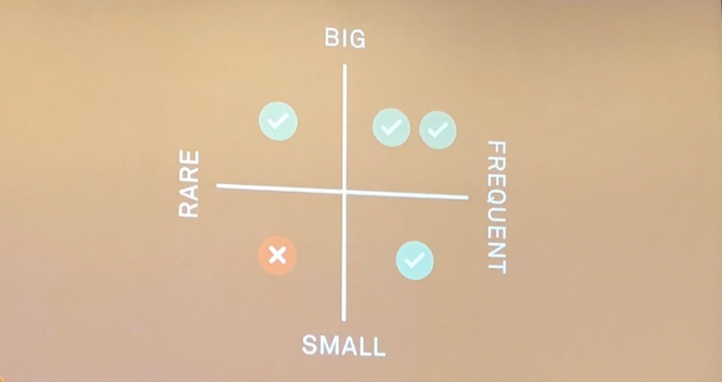
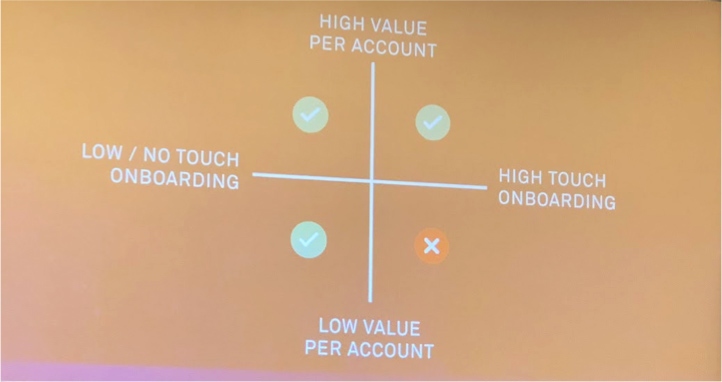
One of the biggest aspects of a product build is nailing where to start and stop with your product in the user’s workflow. The product should be introduced at a point where it provides new value to the user, such as being easier, cheaper, faster, or more accessible.
Stop your build when you’re about to overlap with market leaders already doing the same thing, or if the next step is completed in many different ways, or when you simply can’t innovate any further.
Traynor’s final piece of advice on building a successful product is to follow what is called the “scopi-locks” principle.
Relating back to Goldilocks, this product strategy principle centers on creating a product that is “just right” — meaning to not have your initial release be too big that no one can adopt it or too small that it is seen as just a feature.
To use a baking analogy, start small and evolve from a fantastic cupcake, to cake, to wedding cake. You don’t start your baking career with a wedding cake — that’s literally biting off more than you can chew.
“Build a product small enough to adopt, but big enough to matter,” Traynor says about the perfect-sized product.
Align Your Departments Around Shared Vision
The key takeaway from Traynor’s discussion on aligning departments can be summed up in what became his mantra: “build what you sell, sell what you build.” What seems like a simple concept derails so many organizations. Product, marketing, and sales must be aligned around the messaging of the product and overall goals to ensure success.
Traynor stated that independent iteration is extremely dangerous and can easily misalign the messaging of a product. His example was that you can’t just let developers smoke weed in the forest and build whatever they want (though it sounds like quite the strategy for attracting top talent).
Here’s a breakdown showing the dangers of independent iteration, and the cascading effect it can have on an organization:
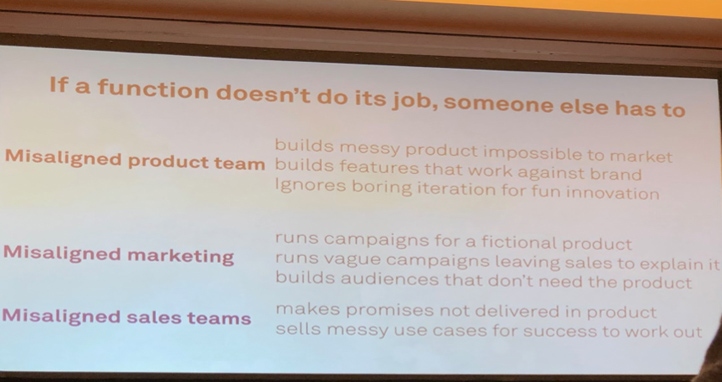
“If product, marketing and sales have different understandings of your world, it’s game over,” Traynor says. “It’s going to be a hot mess.”
Growing and Maintaining Your Product
Keeping in line with the dangers of independent iterations, when discussing growing a product Traynor warned about adding incremental features to products that only provide diminishing returns.
“The road to shitty bloatware is paved with just one more feature because the customer needs it, which is then impossible to support and sell,” states Traynor.
All product work needs to be supported by a revenue hypothesis — that ensures that you’re not needlessly adding features. A few well-built, purposeful features trump several features not backed by data or a market need.
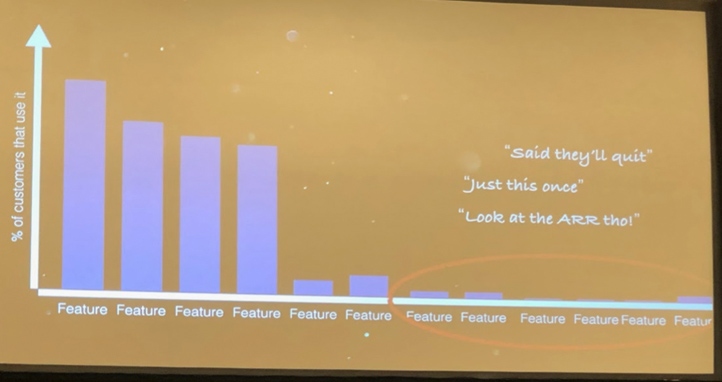
This is crucial because Traynor distilled updates into two potential outcomes.
“In SaaS, every feature you work on either fails to get adopted by customers or gets copied,” Traynor says.
To prevent others from copying your best work and capturing your market share, companies must build “moats” that keep competitors at bay and allow for differentiation.
Traynor revealed that the moats companies need to construct are changing, as he demonstrated in the two slides below — the key takeaway is that new moats should be built with the proliferation of SaaS/subscription in mind.
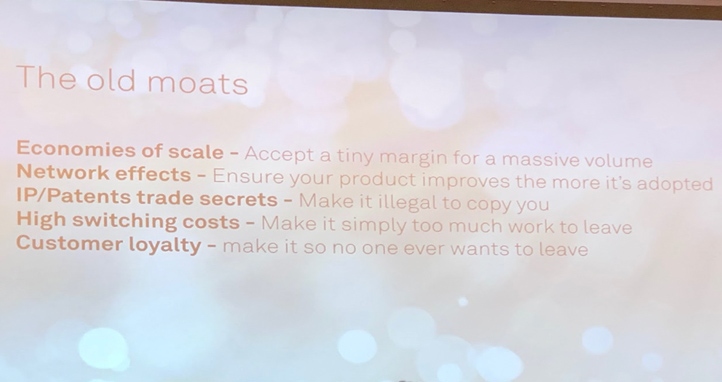
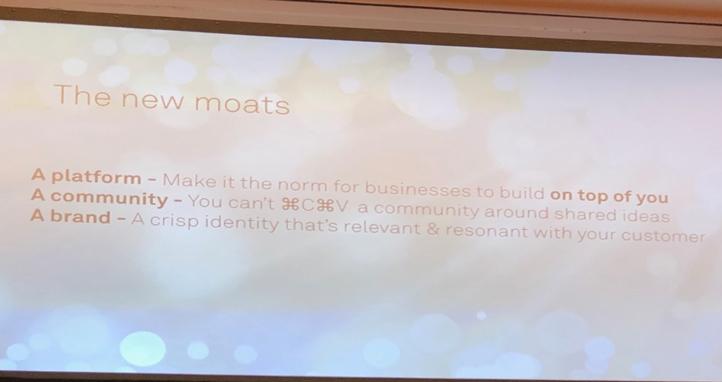
If a company is able to build all three “new” moats, the chance of success increases drastically due to the strong and defensible position they hold in the market.
Going to SaaStr Europa? We’ll be there sharing and seeking growth insights! Feel free to drop us a line and we can meet up during the show — or if you’re inspired to talk product/your next features after checking out Des’ advice, we’re your go-to-PDO. Contact us and we’ll strategize together.


